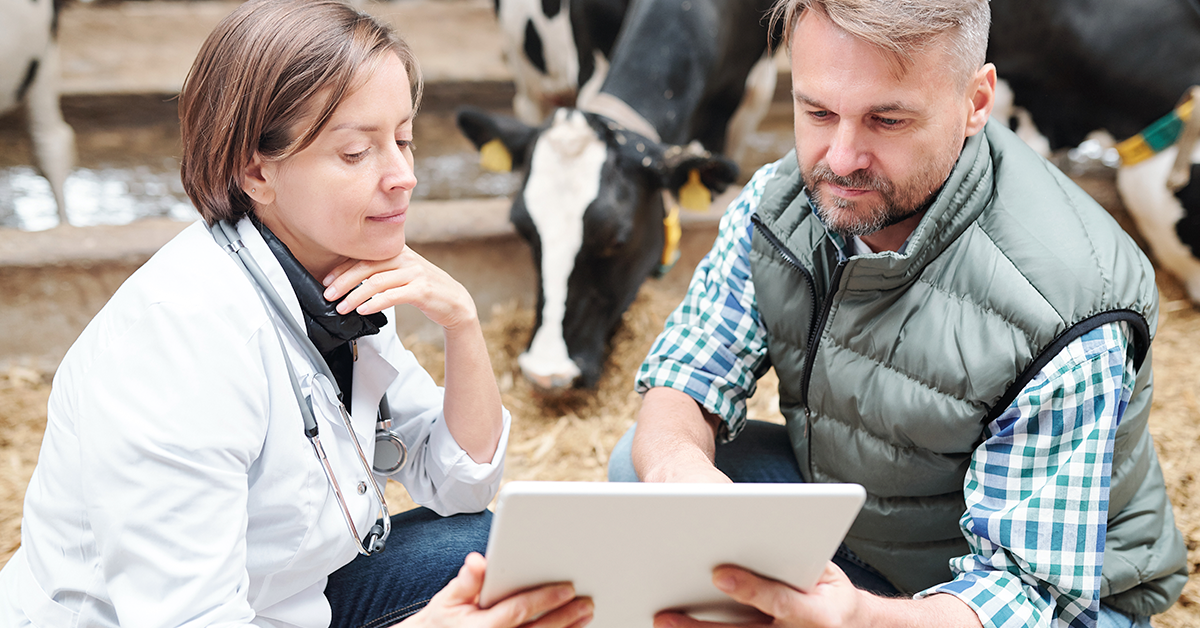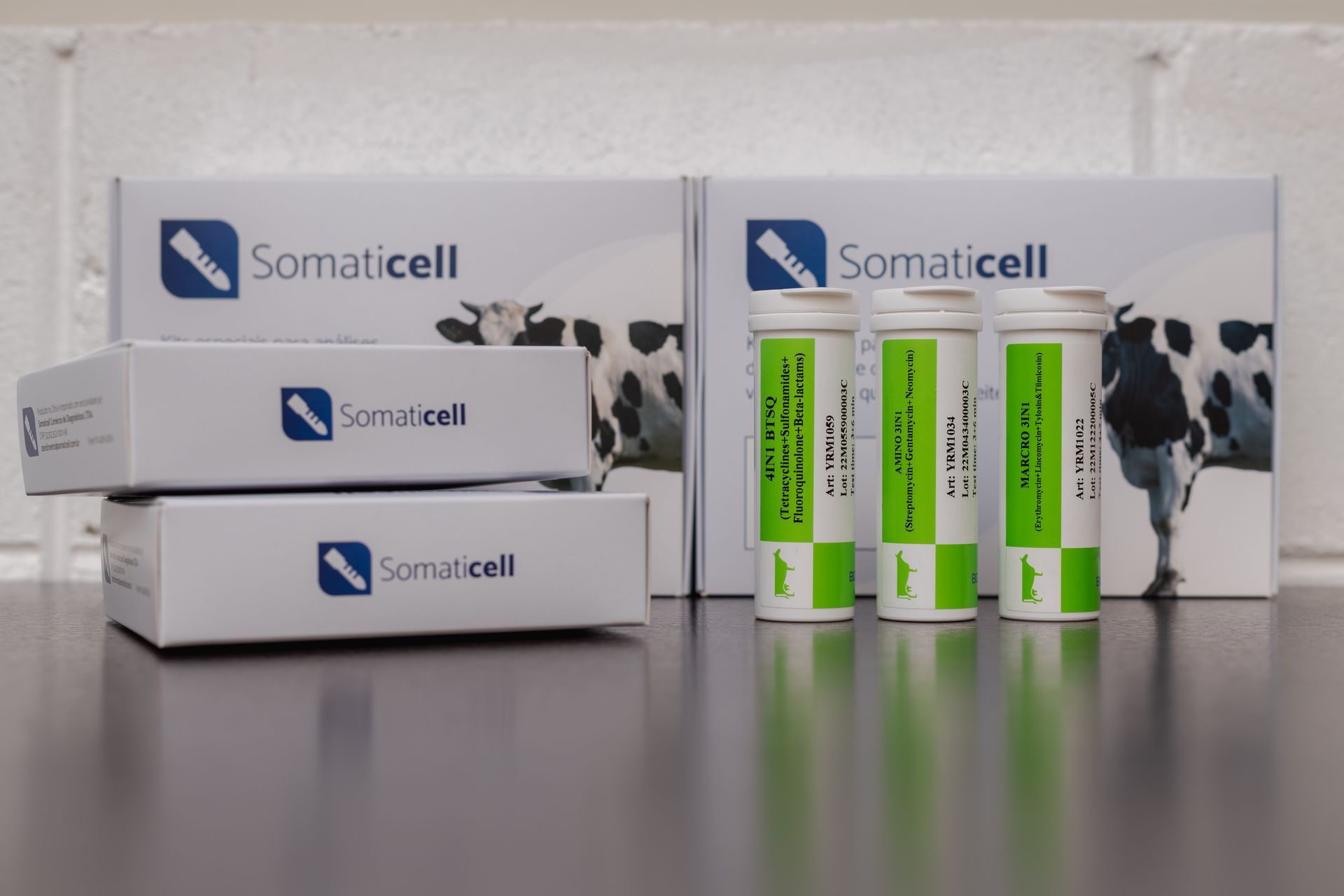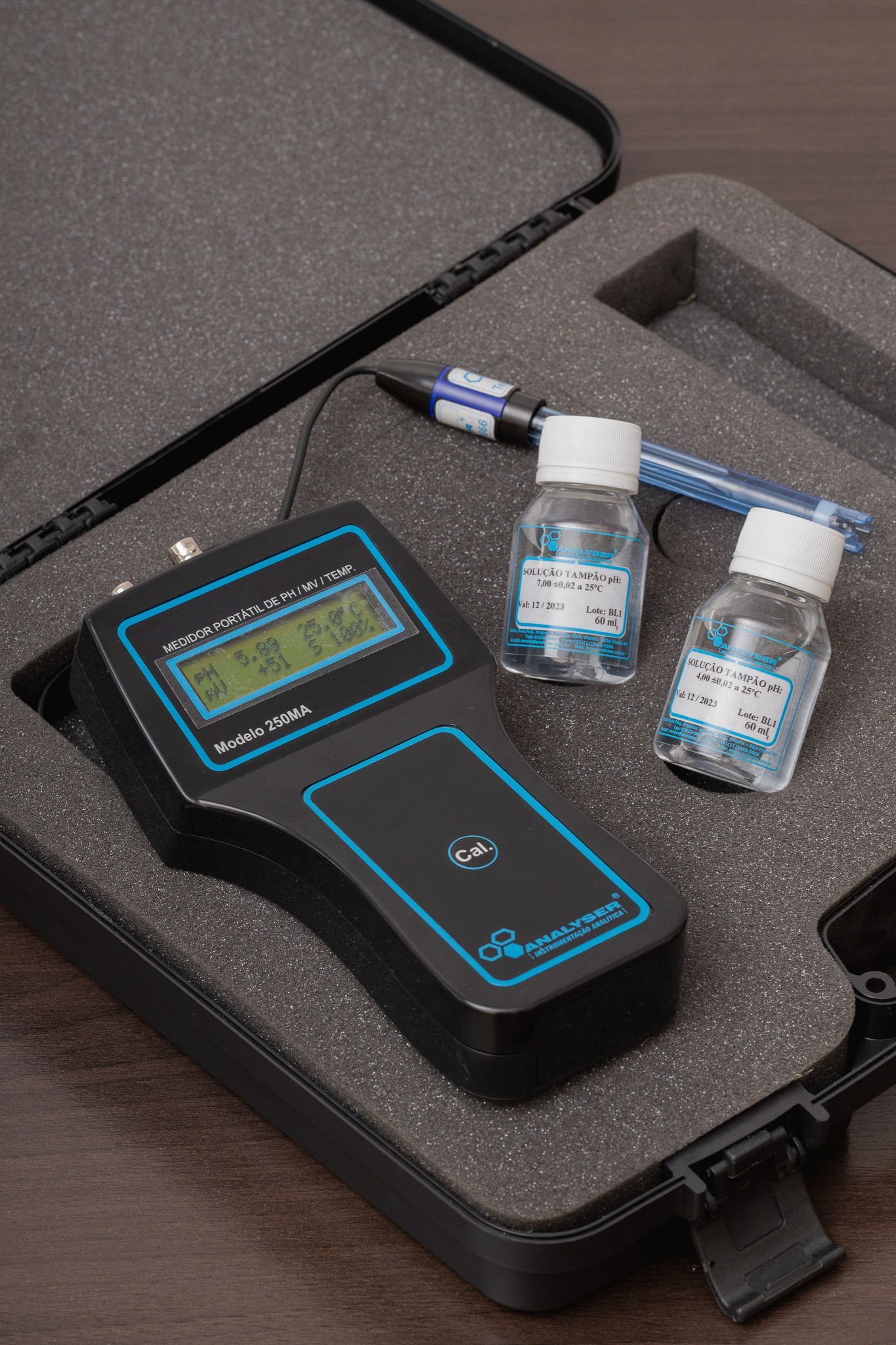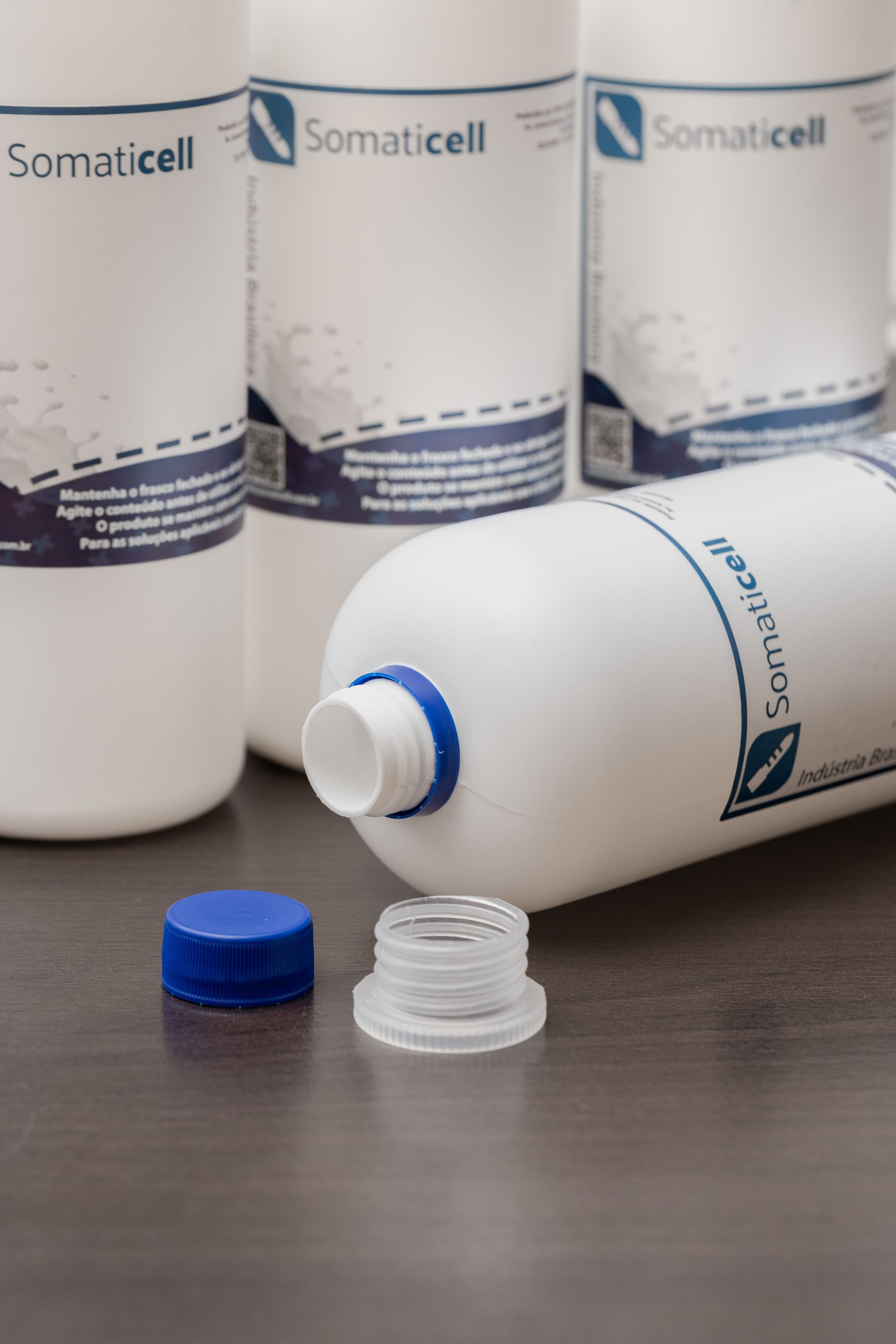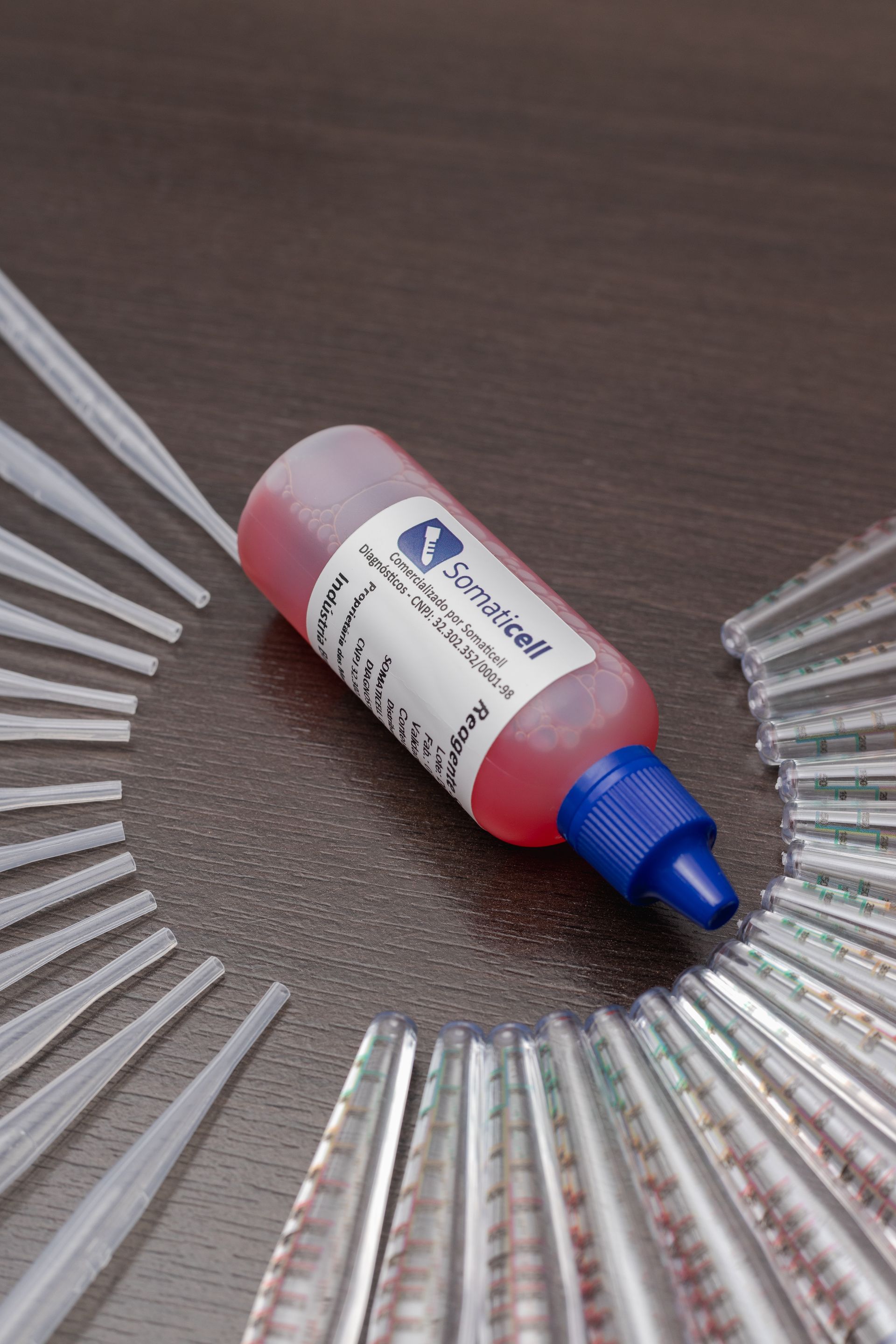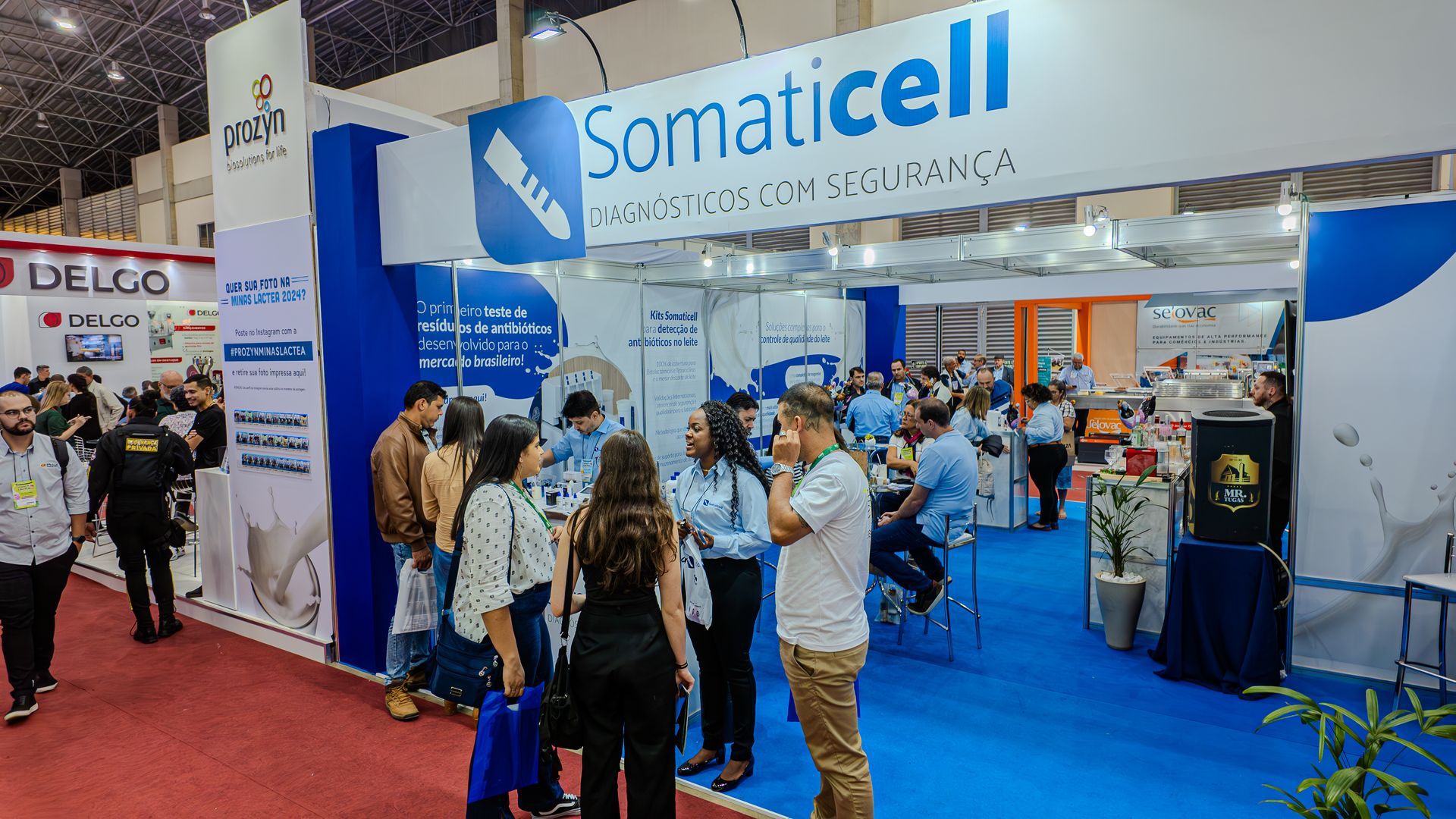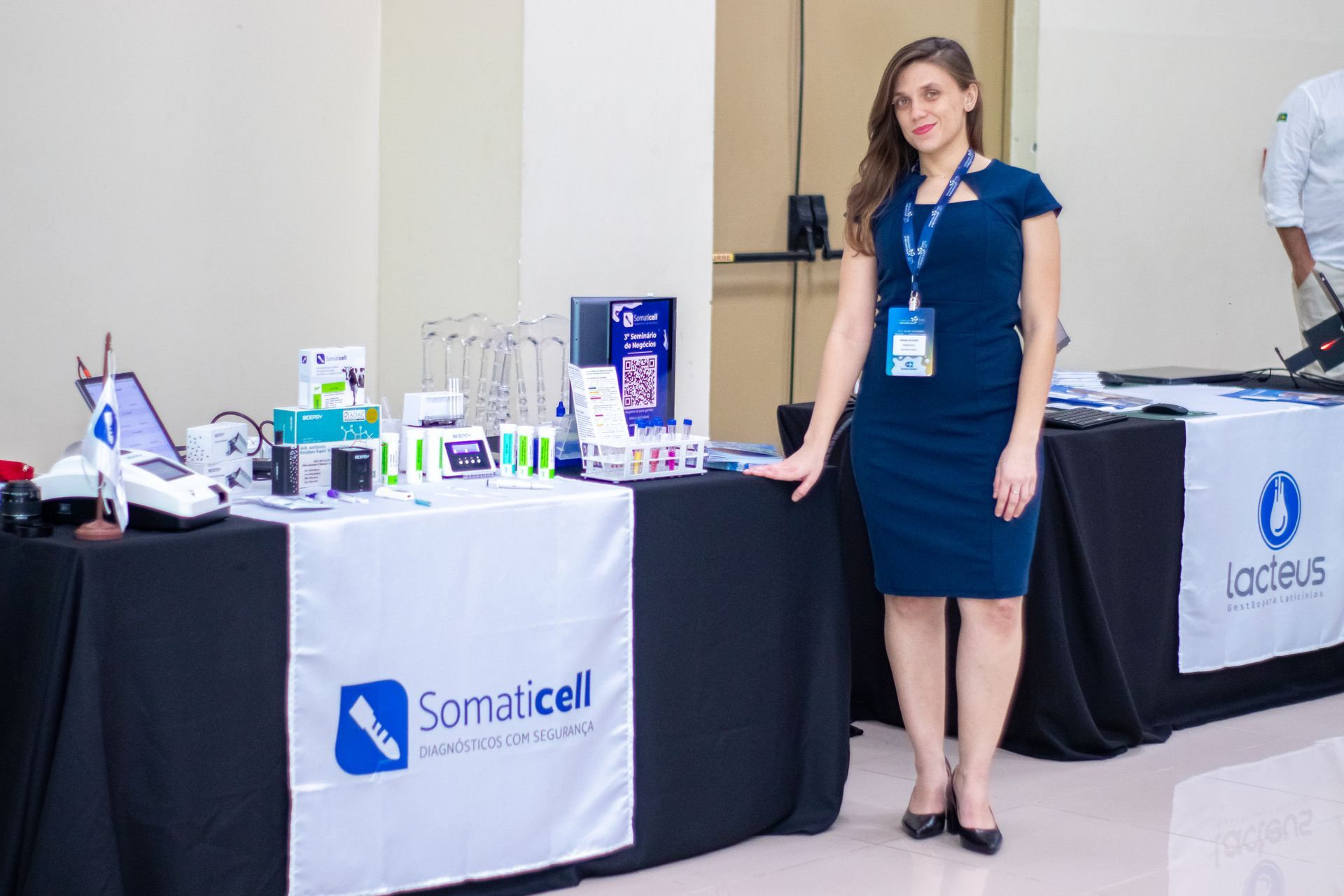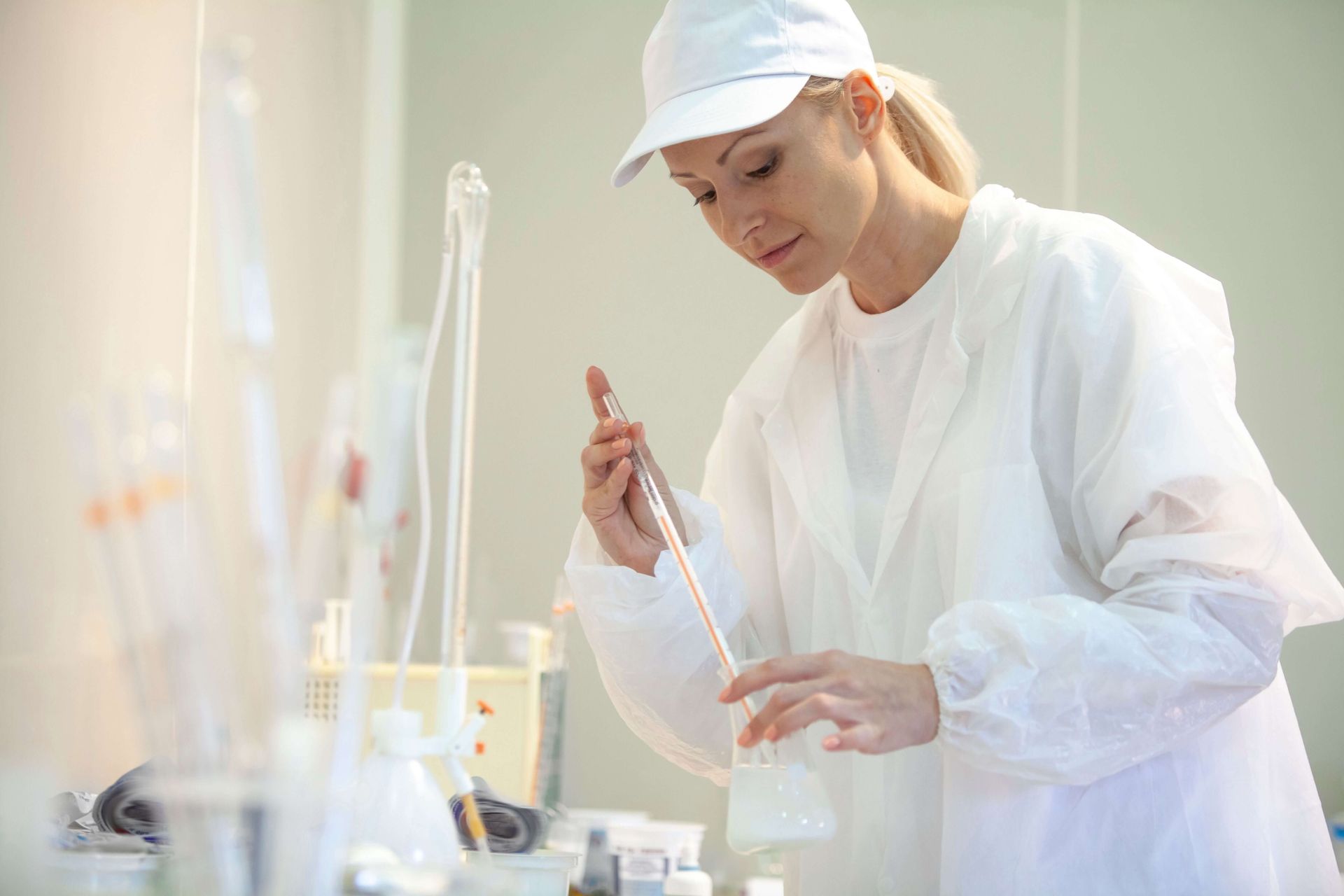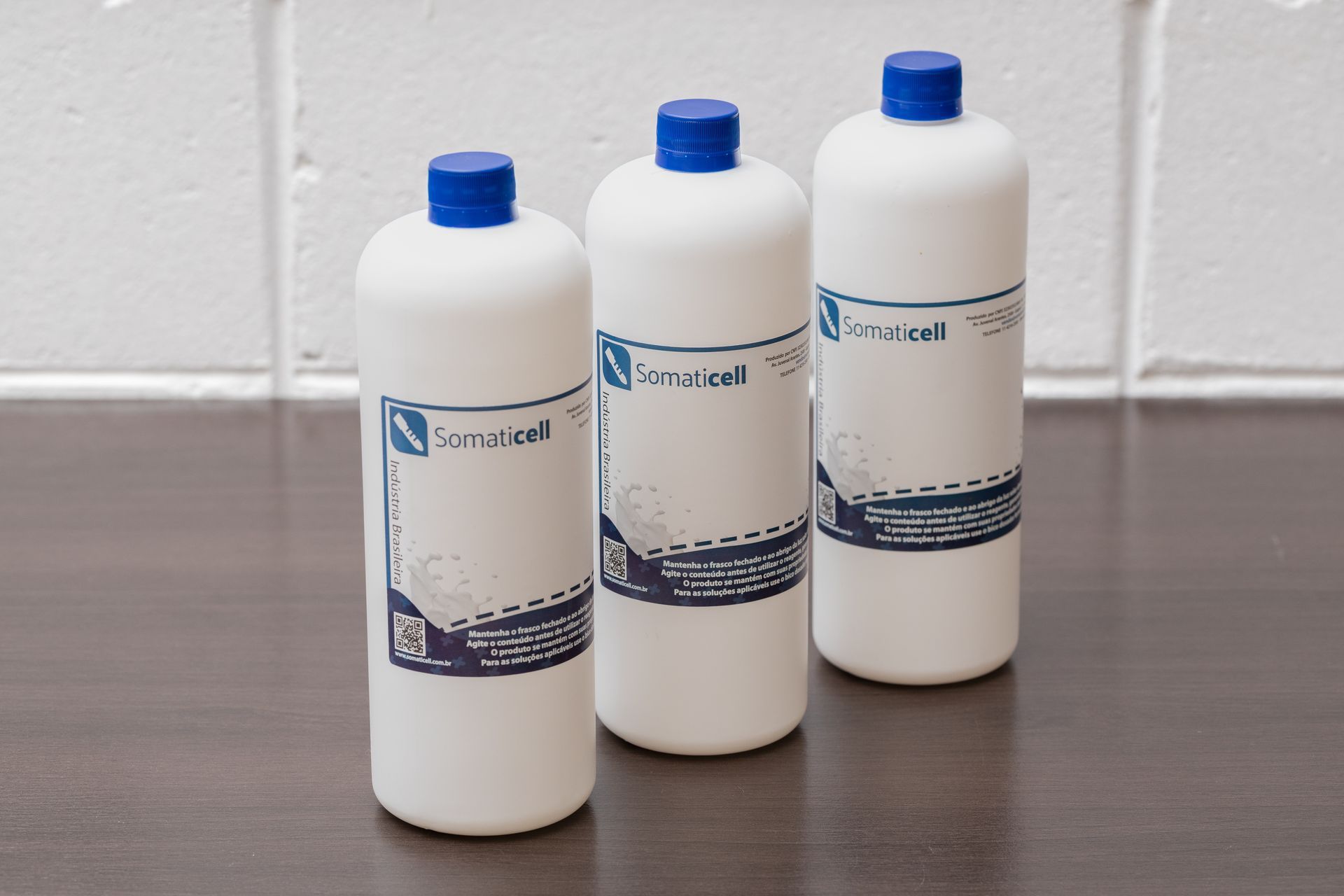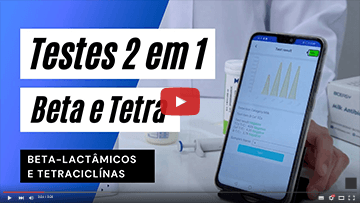Mastitis in dry cows. Understand about it!
During this period, the cows go through a rest of the mammary gland, fundamental for the health of the animal.
Um dos alimentos mais importantes da agropecuária brasileira é o leite. A produção de leite no país mais que dobrou nos últimos 15 anos, correspondendo a 7% do volume mundial e colocando o Brasil como quarto maior produtor de leite do mundo.
In addition to serving as raw material for many other foods, extremely consumed, milk has high value and representation in nutrition. Not to mention its social role, by establishing several job vacancies in this industry.
However, even with the increase in production, this is an activity that has many challenges and costs, especially in terms of infrastructure and animal care strategies. One must have understanding of all stages of milk production, so that it is possible to obtain a good final product.
This is because each step will require specific care, which will result in successful production. And among them, there is the dry period of cows, considered of paramount importance for healthy lactation.
During this period, the cows go through a rest of the mammary gland, fundamental for the health of the animal and prevention of future loss of milk. And more than rest, the drying period is an excellent opportunity to treat mastitis.
Por isso, trouxemos neste artigo informações essenciais para que você entenda como ocorre a mastite em vacas secas, como tratar e por que o tratamento é recomendado nessa etapa.
Check out what you will find in this reading:
- Dry period: why is it important
- Understanding mastitis in dry cows
- Main factors for infections in dry cows
- Dry cow therapy: what are its advantages?
- Selective cow therapy
- Use of ceiling sealants
- Good practices and main precautions
Dry period: why is it important
The dry period is a phase that deserves attention and care, as it is during this period that the animal can recover and prepare for the next lactation, ensuring success in the dairy farm.
Esse período consiste em uma fase de descanso da glândula mamária, a qual deve variar de 45 a 60 dias, antes do parto. A redução ou aumento desse período pode ocasionar em perdas futuras na produção.
Its role is fundamental precisely because in it the mammary gland cells have the opportunity to intensify and regenerate, ensuring the accumulation of antibodies and leaving the cow prepared for a new lactation.
However, in the period of dry cows, not only is there an opportunity to provide physiological rest, it is also an excellent time for the treatment of subclinical mastitis.
This is because many dry cows arrive in this period with intramammary infections, which could not be treated during lactation.
Follow the next topic and see the characteristics of these infections and the condition in dry cows.
Understanding mastitis in dry cows
First, it is important to reinforce how infections occur, in order to contextualize the picture of mastitis in dry cows.
Mastitis is caused by groups of microorganisms. They are infectious agents and environmental agents. Such agents cause an inflammatory process in the cow's mammary gland, with pathological changes in the glandular tissue.
Subclinical mastitis in dry cows
Infectious agents cause infectious mastitis. They adapt to the mammary gland, causing infections that are persistent. Therefore, they characterize subclinical mastitis.
The most common agents are Staphylococcus aureus and Streptococcus agalactiae, which can be transmitted between the mammary quarters during milking.
This occurs both due to the use of improperly cleaned equipment and the lack of hygiene in the hand of the milker.
Environmental mastitis in dry cows
On the other hand, environmental mastitis is caused by microorganisms present in the space where the animal lives, such as manure, mud and water. Thus, these agents – mainly fecal coliforms – are able to enter the udder and find favorable conditions for their multiplication.
The result is a case of mastitis. In large part, clinical mastitis, which if not treated quickly and effectively, can lead to teat loss due to fibrosis or even the death of the animal.
Although clinical mastitis has severe symptoms and subclinical mastitis does not, this milder form deserves attention.
The explanation is that these microorganisms are able to remain without evident clinical signs being diagnosed. One of the ways to diagnose them is through the somatic cell count (SCC).
However, even without clinical signs, subclinical mastitis can cause numerous economic losses, as it can damage the secretory cells of the mammary gland. Another factor is that, due to the lack of symptoms, the producer continues to spread the infection, as he does not see mastitis happening.
The risk of these infections increases in dry cows, being much higher in the two weeks immediately after drying, resulting in even greater cases of new infections than during lactation.
On the other hand, drying is one of the most advantageous periods to treat subclinical mastitis. This period is divided into three physiologically different phases. Understand about them:
Phase 1
It is the phase of active involution that occurs in the first three weeks, after drying. In this first phase, there is accumulation of milk, an increase in intramammary pressure and a high risk of new infections.
There is also an increase in the count of immune cells, which have the function of absorbing the components of milk and milk-producing cells.
Soon, the formation of a keratin plug appears in the teat canal. This plug acts as a barrier that prevents the entry of mastitis-causing pathogens.
Phase 2
In phase two the udder is completely involuted and without secretions. Therefore, the risk of new infections decreases.
Phase 3
After the previous stages, the mammary gland starts producing colostrum, about three weeks before delivery. This phase involves the increase of antibodies and milk components.
In this final stage, in addition to greater udder pressure, the animal has a lower immune response capacity, increasing the likelihood of new cases of mastitis, especially those caused by environmental agents.
This risk will depend on the cow's defense mechanisms and what the contamination will cause. In any case, mastitis in dry cows causes losses such as a decrease in milk and its quality in the following lactation, as well as an increase in cases of clinical mastitis in the postpartum period.
Thus, with strategies for the treatment of dry cows, it is possible to significantly reduce cases of clinical mastitis in the herd.
Main factors for mastitis infections in dry cows
There are some factors that are crucial when it comes to infections in dry cows. One of the main ones is the fact that this is a period of metabolic changes and a strong drop in immunity.
Because of this, the risk of environmental infections is greater. Mainly on farms where the pre-calving and maternity environment do not provide the appropriate conditions for the animals.
In addition, some other factors deserve to be highlighted, such as:
- Greater internal pressure of the udder, due to the volume of milk;
- Increased penetration of microorganisms, resulting from the dilation of the teat canal;
- Lack of milking, making retained milk an ideal substrate for bacterial growth;
- Defense cells mobilized in other functions, such as removing dead cells and milk residues;
Dry cow therapy: what are its advantages?
Although there is a higher risk of infections, cure rates are higher in dry cow treatments.
One of the reasons is the possibility of using drugs with a higher concentration of antibiotics, since in lactating cows, milk with antibiotic residue needs to be discarded.
Consequently, this disposal becomes a loss for the producer. And with dry cow therapy, the chance of milk contamination is greatly reduced if the minimum withdrawal period for the medicine is followed.
It is noteworthy that cows that achieve cure of intramammary infections, with this therapy, have their useful life in the herd increased, as they do not need to undergo segregation or culling.
Other advantages are the possibility of recovery from lesions in the mammary gland and less incidence of clinical mastitis from the first week after delivery.
But, this recovery will also depend on the causative agent, the age of the cow, as well as its health.
Selective cow therapy
There is a strong tendency to reduce the use of antimicrobials in production animals, both due to health issues and the increased resistance of microorganisms in the products used.
In this context, some countries such as the Netherlands and Denmark have adopted selective cow therapy as an option.
This therapy assumes that not all cows have an intramammary infection at the time of drying. Thus, the basis for choice are factors such as microbiological culture, history of clinical mastitis and CCS.
These factors determine which cows should receive intramammary antibiotic infusions and which cows need only the use of teat sealant.
Use of ceiling sealants
As we mentioned, in the first weeks after drying, the formation of the keratin plug on the teat begins to function as a barrier against intramammary infections.
However, failure or delay in this formation is common, which greatly reduces protection against microorganisms.
For these cases, teat sealants and the internal environment of the mammary gland were created. These sealants are intended to perform the same function as the keratin plug.
They are made from an inert solution with no antimicrobial protection and perform well as a natural tampon. After all, with it it is possible to interrupt the communication between the inside of the mammary gland with the external environment.
The sealant remains in the teat canal throughout the dry period and it is possible to remove it manually after delivery.
There are some cases in which the use of the sealant is associated with the use of antibiotics in dry cows, reinforcing the protection of the mammary gland.
Good practices and main precautions
In fact, the best way to take care of the business and avoid losses is by adopting preventive measures against new cases of mastitis.
Having strategies for an adequate treatment of dry cows is essential, especially at the end of lactation.
Até porque, os benefícios diretos do tratamento de vacas secas são maiores do que a taxa de cura nos tratamentos durante a lactação. Por isso, adotar boas práticas na fazenda é essencial.
Thus, antimicrobial treatment in drying can be done in a simple way. Intramammary antibiotic infusion, specific for dry cows, must be infused in all mammary quarters, monitoring in the first two weeks. However, care must be taken so that the cannula is partially inserted, without damaging the teat keratin plug. In addition, this plug cannot be pushed, as it could carry microorganisms into the teat canal. And hygiene at that moment is fundamental. Follow up with a veterinarian.
In addition, some good practices can help a lot, such as:
- Completely empty the ceilings;
- Use a pre-dipping solution on the ceilings;
- Dry the teats with a disposable paper towel after the product has been active for a long time;
- Disinfect the fingertips with a specific product or alcohol 70%;
- Use short cannula;
- Massage the teats from bottom to top to spread the medicine;
- Immerse teats in post-dipping solution.
It is worth remembering that these precautions will be more effective with the joint use of sealants and the adequacy of a clean and comfortable environment. In this way, it is possible to have a healthy and profitable production.
Nesse sentido, a
Somaticell possui soluções para criadores de gado leiteiro. Nossa empresa garante soluções que irão assegurar a qualidade do seu leite.
Contact us e saiba mais.
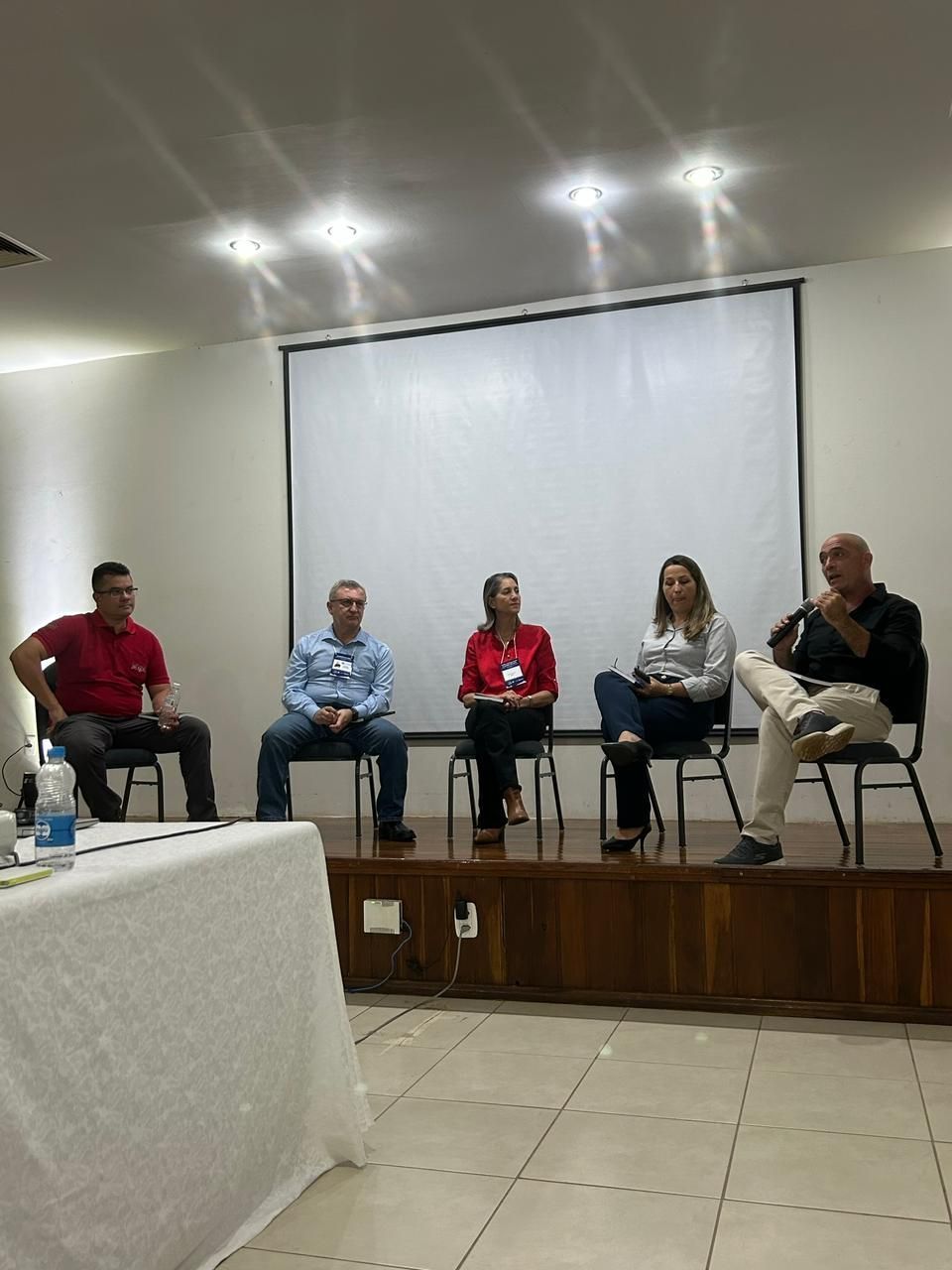
Conheça nosso App

Our Educational Videos
Somaticell on Social Networks


